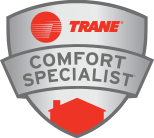There are literally dozens of things you can do to cut back on your heating and cooling costs in Salt Lake City. These range from things like getting a high energy efficiency system to just making sure that you have adequate insulation in all parts of your house. But too many people overlook one of the simplest things that you can do to cut down on your monthly heating bill, and that is to turn the thermostat down.
Of course, you did not pay for that high tech home comfort system just so that you could walk around cold all winter long. You certainly want to keep your house at a temperature that is comfortable, but what does that really mean?
The normal default setting for a home heating system is usually somewhere between 72°F and 75°F. If you have your thermostat set somewhere in this range in the winter, you are probably quite comfortable indoors. In fact, you might not even need a sweater. But would you really notice if it was a degree or two cooler? Would it be incredibly inconvenient to put on a sweater or sweatshirt after all?
The truth is that most of us will be just as comfortable at 69°F as we are at 72°F, and the effect that small adjustment can have on your heating bill is actually pretty significant. In fact, you will save an average of 3% on your monthly bill for every degree you turn your thermostat down. Drop the temperature down by three or four degrees and that will give you up to a 10% monthly savings – hardly something to turn up your nose at.
And setting the regular temperature in your house a bit lower is not the only way your thermostat settings can save you money. You will also save quite a bit if you take the time to turn down the temperature when you leave the house and when you go to bed at night. There simply is no reason to pay to heat your house when you are not there and you will certainly be rewarded with a lower energy bill for your efforts.


